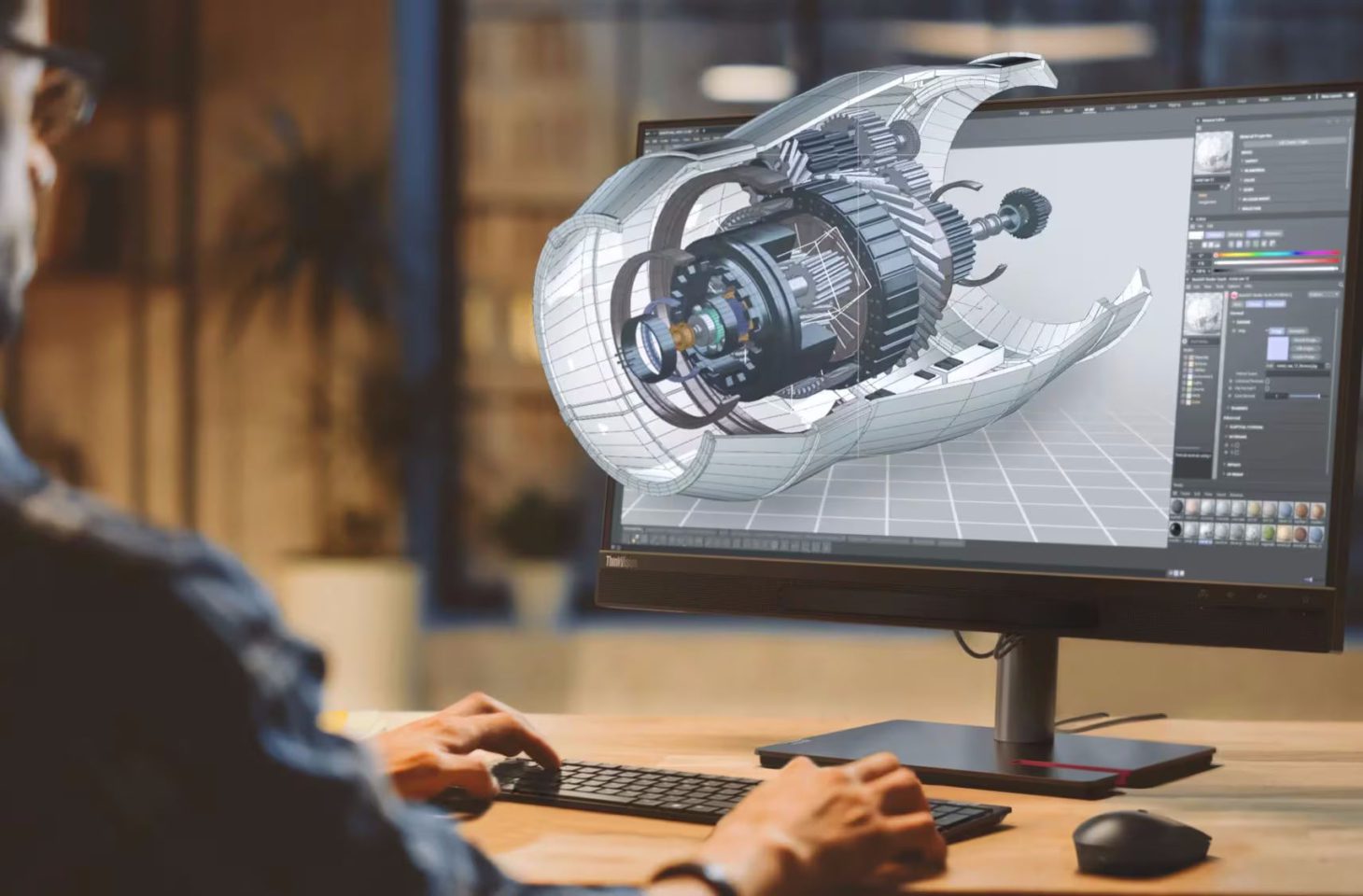3D, no glasses: the holy grail for CAD and animation?
- December 2, 2024
- 0
You have to wear glasses in the cinema, but behind the computer screen you can now experience 3D without glasses. There are still limitations, but the path to
You have to wear glasses in the cinema, but behind the computer screen you can now experience 3D without glasses. There are still limitations, but the path to

You have to wear glasses in the cinema, but behind the computer screen you can now experience 3D without glasses. There are still limitations, but the path to true 3D displays in a professional context seems open.
Jane Qianying Wan, GM of Lenovo Research’s Technical Strategy & Innovation Platform, had to play second fiddle at Lenovo Tech World in Seattle. The core message of this event was – how could it be otherwise – about AI. Wan has a different focus. “3D is my project,” she says. “It seems to be the holy grail. People want to get there again and again, but the experience needs to captivate the user. This is not possible with glasses.”
There is little time for Wan’s 3D project during the keynotes, but the project gets the attention it needs on the exhibition floor. “There is a trend where we are moving from 2D to 3D,” says WAN. “That requires computing power, but the screen is also quite a challenge.”
Lenovo will demonstrate various 3D displays and even a 3D laptop during the event. The principles are the same in all cases. The screens provide each eye with a portion of the 3D image individually. The display is equipped with a camera that follows the user’s eyes. Based on eye position, adjustable lenticular lenses for the pixels create the right image in the right direction.
This works very well. The screens take a few seconds to calibrate, but then we don’t let go of our eyes. In the first few seconds, the 3D image looks like in the cinema when you take off the glasses. Then suddenly the door to real 3D opens. The quality is excellent when gaming and remains excellent when viewing 3D models.
It’s striking how natural the viewing experience is. Without glasses, the 3D effect feels much more organic. During our short test, we did not notice any additional strain on the eyes. After a few minutes we actually got used to the 3D display and the 2D display felt limiting. Lenovo isn’t the only one relying on the technology. Acer, for example, had a similar percentage in early 2024.
“The next generation of screens will be even better,” says WAN. “Higher resolution panels are already possible.” The technology’s current focus is on single-person displays, and it’s pretty easy to see why. As soon as you look over our shoulders, the 3D effect turns back into a blurry soup. The additional eyes confuse the sensor and the correct images no longer come through.
In business, Wan sees several areas where glasses-free 3D displays can provide added value. “In healthcare, a surgeon can’t just put on glasses, he can see into the depths,” she gives an example. Another clear focus is on creative work. “Designers can see their designs in 3D.” Lenovo works with design tools to bring support from the screens into the software.
According to Wan, a new type of screen also requires a new type of input. “A mouse is possible, but you actually need an additional axis of freedom.” In theory, you can work with large gestures because the screens are already equipped with cameras. However, Wan doesn’t think this is a solution either. “You don’t want to be waving your arms all day at work. Movements must be implicit.”
Lenovo proposes a solution in the form of a ring. It is inspired by the trackpoint (the red dot on laptops) and is therefore called TrackPoint ring. The ring allows you to manipulate the 3D world with small hand movements. Large movements still work: without a ring, for example, we rotate a 3D model with our hands in all directions. This takes some practice, but overall it works well.
Wan has high hopes for the technology. It seems to be slowly gaining a place in the business world. The disadvantages are no longer big. The 3D effect has little influence on the quality. For example, the Lenovo ThinkVision 27 3D, which Lenovo introduced in September, is said to cover 99 percent of the DCI-P3 and Adobe RGB color spaces, with enormous color fastness. Lenovo claims an average DeltaE of less than one. The resolution is also not bad at 1,920 x 2,160 pixels in 3D.
For now, devices like the laptop with a 3D screen are still demos and are not available on the market. This will fundamentally change in the coming year. The technology at Lenovo certainly looks mature and the added value for various business applications is clear. Anyone who designs in 3D could actually see these designs in 3D with no effort or glasses. That seems like an attractive option to us.
Source: IT Daily
As an experienced journalist and author, Mary has been reporting on the latest news and trends for over 5 years. With a passion for uncovering the stories behind the headlines, Mary has earned a reputation as a trusted voice in the world of journalism. Her writing style is insightful, engaging and thought-provoking, as she takes a deep dive into the most pressing issues of our time.